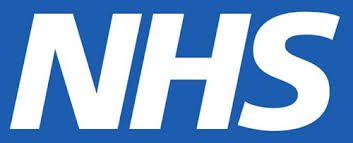Seeing pupil power bring about changes in school dinner menus and playground design was my first taste of public participation in decision making.
I was a secondary teacher in Wigan and took on the role of leading the School Council, which led to a wider role with Wigan Borough Council, bringing together representatives of all the local school pupils to meet every three months in the grand chambers of the town hall.
That experience showed me that authorities do want to hear from the public and can be influenced, if the right systems and structures are in place to allow questions and provide feedback.
Now, after six years as Patient and Public Involvement (PPI) Lead for the Innovation Agency I am still helping organisations to connect with the people they serve, but this time in the interests of improving healthcare.
Recently I took on the role of chairing the national AHSN Network forum of PPI Leads so I’ve been finding out more about how we make a difference through our work to amplify the public voice, from different parts of the country.
PPI in practice
Health Innovation Manchester, the AHSN for Greater Manchester, worked closely with pregnant women to create and launch an app to support the remote monitoring of high-risk pregnancies. Read Rose’s story.
Patients and public are currently developing a patient-held record app for the Greater Manchester Care Record Project, giving people control of their own health and care information.
In the North West Coast, the Innovation Agency Public Involvement and Engagement Senate (PIES) includes volunteer public representatives who are often asked to try out an innovation or check some information to make sure it’s easy to understand.
We recently road tested a device to stop snoring which is now being piloted by a local hospital; while a new sock for diabetic patients is the next product for our volunteers to try.
We’ve rewritten countless leaflets and product descriptions; co-designed and tested an app; and made recommendations to improve diversity in the images used to market an innovation.
We know that some parts of our population won’t come to us, so we go out to them. We go to community groups, health fairs, mosques and temples to offer screening with blood pressure and pulse testing devices. This screening is to encourage people to monitor their health and seek help if the numbers give cause for concern.
It links to our colleagues’ work in cardiovascular disease prevention – and it gives us a connection to communities who might not otherwise engage with the Innovation Agency, so we can ask for their views on innovations and on some of the health improvement programmes we deliver.
Our work has grown over the years and our army of volunteers includes Heart Heroes who help with the health screening; and a youth forum made up of young people keen to find out about health innovation.
Unexpected outcomes
I am often surprised at the way our discussions can cause an innovator to take a different approach. A recent example was a meeting of our newly formed youth forum, when someone expressed interest in finding out about the menopause.
Menopause in the workplace consultant June Potts was invited to talk to the group and the response was amazing. One young person said he wished he’d known about menopause a few years ago when his mum was going through it as he would have been more sympathetic and they wouldn’t have had so many arguments.
The upshot is that June is now designing a course to deliver in schools, which fits with the recent change to the curriculum for personal, social, health and economic (PSHE) education, to include menopause awareness. A serendipitous outcome for June after providing really helpful information for our youth forum.
Different approaches, same result
Each of the 15 AHSNs approaches PPI differently but all include patients, carers, service users and clinicians in a collaborative approach and we all work closely with colleagues in patient safety national programmes.
Wessex AHSN have developed a framework for patient and public involvement called ARISE – aims, recruitment, integration, support and evaluation. This offers a structured approach to recruiting patient and carer representative in different work programmes.
Since starting my role as a PPI lead I have gained the confidence to stand for election to my local council and I now represent the people of Standish, making sure their voices are heard.
I know that whether as patients or potential patients and service users we can’t get everything we ask for and often there are good reasons, such as lack of funding or space. But at the very least we expect an answer and an explanation, which is my mission for the AHSN Network – and for my local neighbourhood.
- Twitter: @TalkToDebbie
- Facebook: https://www.facebook.com/talk2debbie
- LinkedIn: https://www.linkedin.com/in/debbie-parkinson-30717624/

Grace Gimson is the founder and CEO of Holly Health, a digital platform dedicated to transforming healthcare through preventive and person-centered digital health coaching. The platform aims to support individuals struggling with mental or physical health. Grace is a generalist with a background in operations, business leadership, and scaling tech startups such as Deliveroo. [...]

HN (Health Navigator) is an AI-powered health innovation that enables preventative care through predictive analytics. Founded in Sweden by Dr Joachim Werr, a former A&E consultant, HN is now supporting healthcare systems across the UK to identify high-risk patients before they reach crisis point. Joachim shares the journey behind HN and the transformative impact of [...]

The government has set out three shifts it wants to see happen: treatment to prevention, hospital to community, analogue to digital. HealthTech has a crucial role in supporting the delivery of all three. But using technology to help deliver these changes requires procuring the technology, and when all the noise is about there being no [...]









